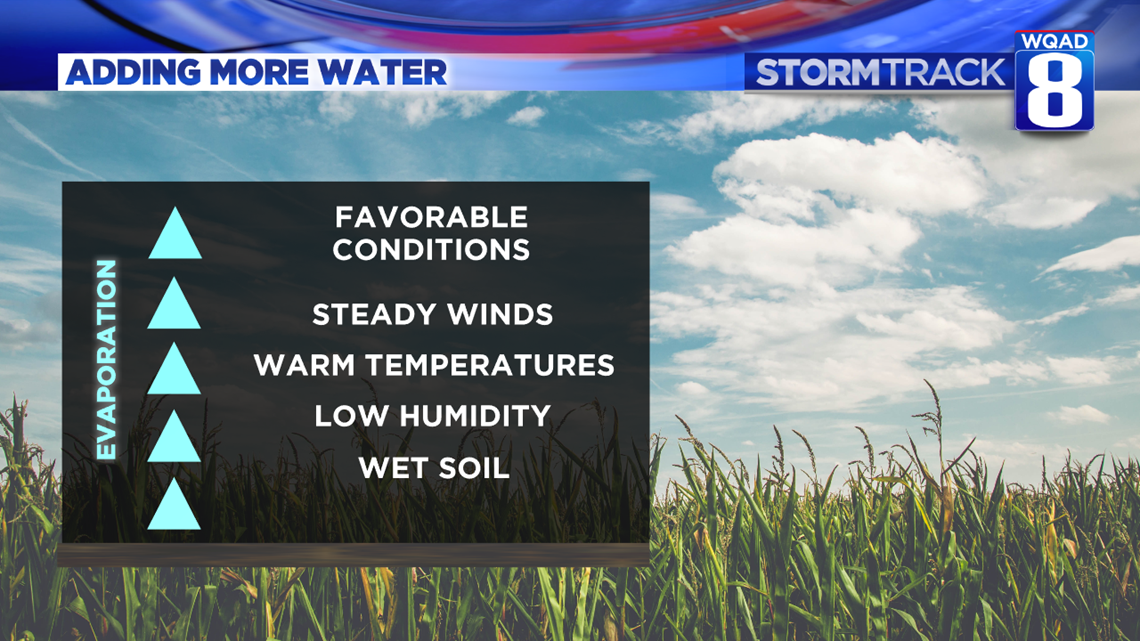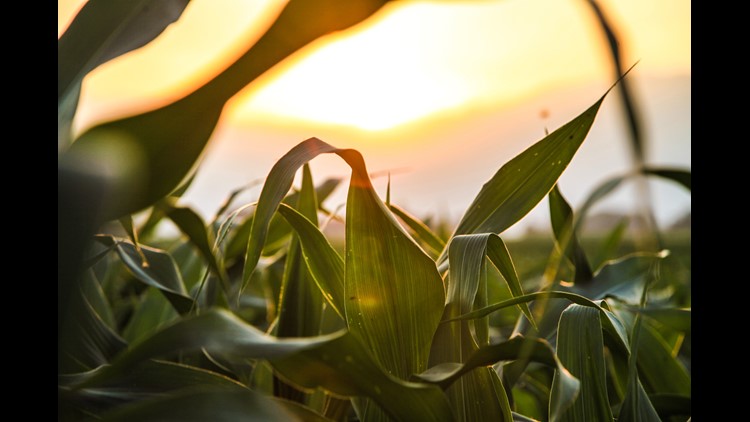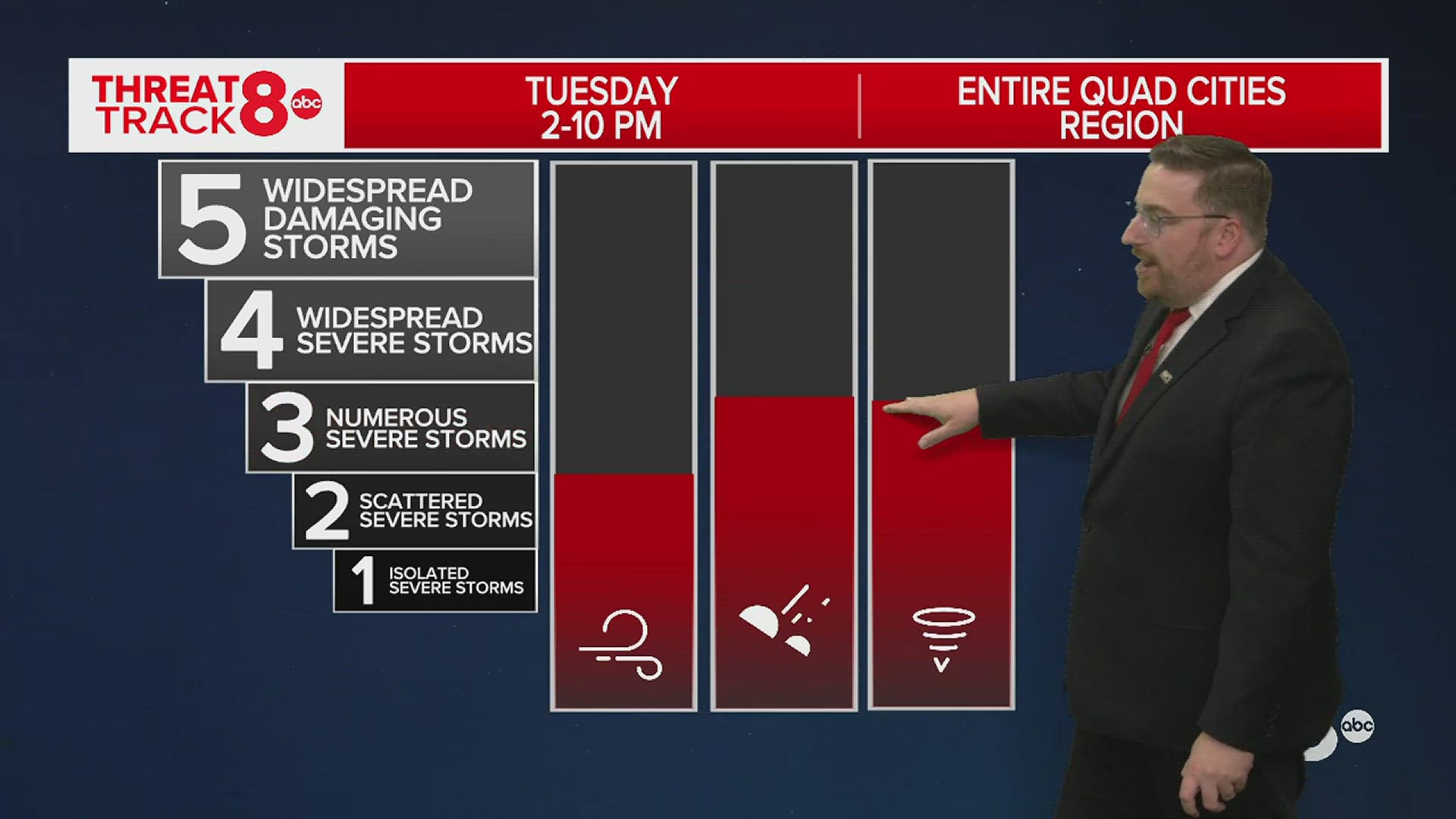The added humidity in the air from all of the recent rainfall won’t be the only thing that will cause us more discomfort this summer. The crops sitting in the fields play a big part, too!


There are two processes that occur in every farm field throughout Iowa and Illinois. Evaporation and evapotranspiration. We’re all familiar with evaporation which involves moving water from the topsoil up into the lower levels of the atmosphere. It’s what dries out pavement after a storm and whats responsible for sometimes killing our plants if we forget to water them regularly. Evapotranspiration though is a different animal and when you break down the numbers, it really is truly amazing how much water soybeans and corn, for example, can throw into our atmosphere. The ideal conditions for both phenomena involve steady wind speeds, warm temperatures, low humidity levels, and wet soil. Sunshine doesn’t hurt, either.


With evapotranspiration, we are focusing on the water movement through the plant. As long as soil conditions remain favorable, plants such as soybeans and corn are capable of emitting at least a quarter of an inch of water into the air daily, especially during the peak growing season. This added water not only makes it feel more uncomfortable during those hot summer days but it also significantly contributes to the amount of rain that thunderstorms produce once they encounter all this moisture. Water has several functions in plants, including temperature regulation, nutrient transport, and most importantly, hydration.


Because of the amount of flooding our region has experienced this year, several delays are being experienced when it comes to planting and fieldwork. Typically we’ll see the highest levels of evapotranspiration between July and September as the crops mature. That’s when the highest amount of water is pushed into the lower parts of the atmosphere. However, this year because of the terrible soil conditions so early in the season, we’ll likely see this peak pushed back by at least a few weeks, if not an entire month since many farms have started planting later than normal.


Measuring evaporation rates is actually a rather simple process. Evaporation pans are set out and filled with a certain quantity of water. Measurements are taken at different points from within this pan to determine how much water was lost over a given time period. Doing some simple calculations will yield the evaporation rate for the day.


Actual evaporation rates vary just like evapotranspiration rates. However, evaporation rates are more closely tied to the amount of incoming solar radiation, which peaks during the summer months. During that time, we can evaporate as much as six inches of water in just a months time. This is why it is so critical that we receive rainfall quite frequently during these months. Any kind of deficit can quickly grow out of control and create a massive drought when you are losing this much water a month, especially if it remains a consistent loss.
Meteorologist Andrew Stutzke
Download the News 8 Weather App — for iOS, click here and for Android, click here
Download the free News 8 App — for iOS, click here and for Android, click here



